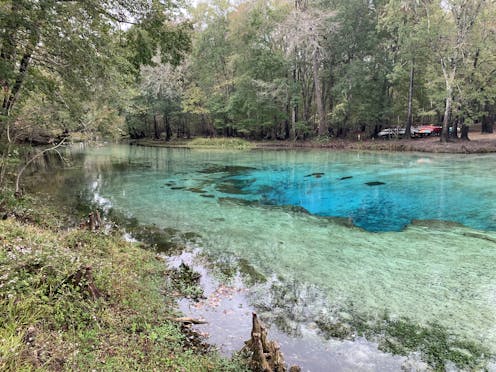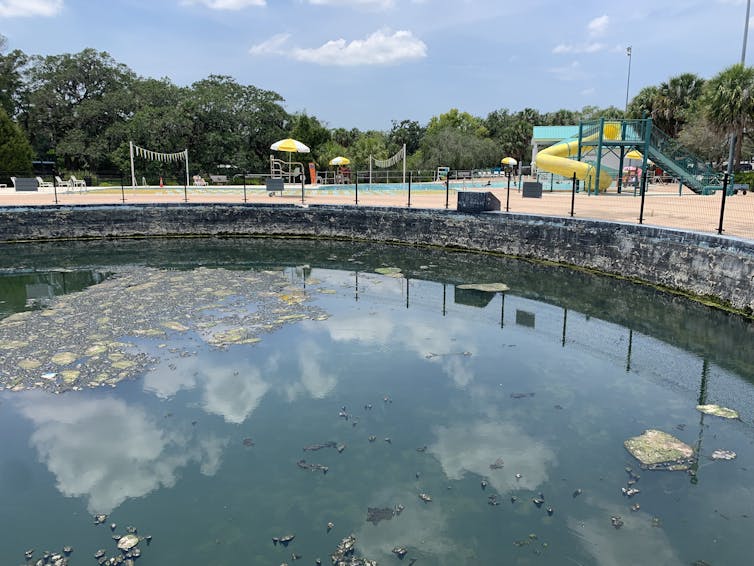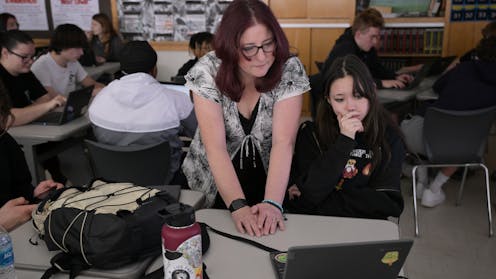Source: The Conversation – Africa – By Cormac Price, Post-doctoral fellow the HerpHealth lab, office 218, Building G23. Unit for Environmental Sciences and Management, North-West University; University of KwaZulu-Natal
Black mambas (Dendroaspis polylepis) are Africa’s longest, most famous venomous snakes. Despite their fearsome reputation, these misunderstood snakes are vital players in their ecosystems. They keep rodent populations in check and, in turn, help to protect crops and limit disease spread. The species ranges widely across sub-Saharan Africa, from Senegal to Somalia and south into South Africa. They can adapt to many environments.
Zoologist Cormac Price, in new research with professors Marc Humphries and Graham Alexander and reptile conservationist Nick Evans, found that black mambas can be indicators of heavy metal pollution. We asked him about it.
How do black mambas indicate toxic pollution?
It’s about bio-accumulation. Bioaccumulation happens when chemicals, like pesticides or heavy metals, build up in an organism’s body. These toxins come from polluted environments, from waste products of human activities like manufacturing. They pollute water or soil and gradually accumulate in plants and animals.
If toxins are present in the environment, they may first be taken in by plants, and then by animals that eat the plants, and animals that eat those animals. Black mambas are quite high up the food chain, so a lot of the toxins would accumulate in their bodies. These poisonous substances can reach dangerous levels, causing health problems for whatever eats them.
We tested the presence of four types of heavy metals (arsenic, cadmium, lead and mercury) in the bodies of black mambas.
All our samples were from the eThekwini Municipality (greater Durban area) in South Africa. Durban is a busy shipping container port and has a large industrial sector that includes chemicals, petrochemicals and automotive manufacturing. Alongside all this industry the municipality also has a network of conservancies and green spaces, known as the Durban Metropolitan Open Space System.
We chose to test for these metals because they are widely used in different industries and can cause drastic negative effects in the body. Mercury primarily damages the nervous system, arsenic can cause cancer and skin lesions, cadmium harms kidneys and bones and lead mainly affects brain development and blood functions. Because these metals accumulate over time and are difficult to break down, even low-level exposure can lead to chronic poisoning and long-term health problems.
Black mambas appear to be doing well in Durban and taking advantage of the abundance of rodents, which they eat. Wherever there is human settlement there will be waste and discarded food which rodents take full advantage of. Black mambas can also be quite site-specific when not disturbed, living in the same refuge for many years, giving a clearer indication of pollution levels at that specific site. This makes the snakes potentially good bioindicator species.
A bioindicator species is one that helps us understand the health of an environment. Because they are sensitive to changes like pollution or habitat damage, their presence, absence or condition can reveal if an ecosystem is in good condition or is experiencing increases of pollution or degradation.
The pollutants can be detected and calculated from a non-invasive, harmless scale clipping. Snake scales are composed mostly of keratin, the same sort of protein that produces human hair and nails. To clip a very thin slice of snake scale is as harmless as clipping a human finger nail.
We collected 31 mambas that had already been killed by vehicles, people or dogs, and tested muscle and liver samples from them for toxins. We also took scale clippings from 61 live snakes.
This was the first time in Africa that a species of snake was tested to see if it could be used as an indicator species of heavy metal pollution.
What did you find?
We found that the heavy metal concentrations in scales correlated with those found in the muscle and liver samples. For three of the four metals, scales were as accurate for testing as muscle and liver samples. So the harmless testing method is as good as the more invasive one.
For arsenic, cadmium and lead, the snakes were accumulating significantly lower concentrations of these toxins in the open, natural sites of the Durban Metropolitan Open Space System compared to more industrial and commercial areas. Mercury was less significantly different due to its more volatile nature and its capacity to travel through the environment.
What made you test mamba scales in the first place?
In 2020, I attended a conference on amphibians and reptiles, where a friend of mine presented his work on heavy metal pollutants in tiger snakes in the city of Perth, Australia.
I’ve also been working with Nick Evans of KZN Amphibian & Reptile Conservation for some years, on urban reptile ecology. Nick began collecting scale clippings, and I began to realise, while looking through the literature, how novel this was on a continental scale. Snakes had never been tested as a potential bioindicator species of heavy metal pollution in Africa previously.
Marc Humphries is a professor of environmental chemistry, and I was aware of his work on lead exposure in Nile crocodiles at St Lucia, a wetland in South Africa. When he expressed interest in examining the scale clippings, we were thrilled. Graham Alexander’s expertise in snake behaviour in general and specifically snakes in Durban was also instrumental in the success of this research.
How can this help fight pollution?
The fight against pollution is in the hands of the municipality and city managers. What the snakes are doing is warning us of the increasing danger these pollutants pose to environmental health and ultimately human health. They are also showing us how important open spaces are to the overall environmental and human health of the city of Durban. The snakes are telling us a story; what people in authority decide to do with this story rests with them.
Nick Evans of KZN Amphibian & Reptile Conservation made valuable contributions to the research and was a co-author on the article.
![]()
Cormac Price does not work for, consult, own shares in or receive funding from any company or organisation that would benefit from this article, and has disclosed no relevant affiliations beyond their academic appointment.
– ref. Toxic pollution builds up in snake scales: what we learnt from black mambas – https://theconversation.com/toxic-pollution-builds-up-in-snake-scales-what-we-learnt-from-black-mambas-265802


















